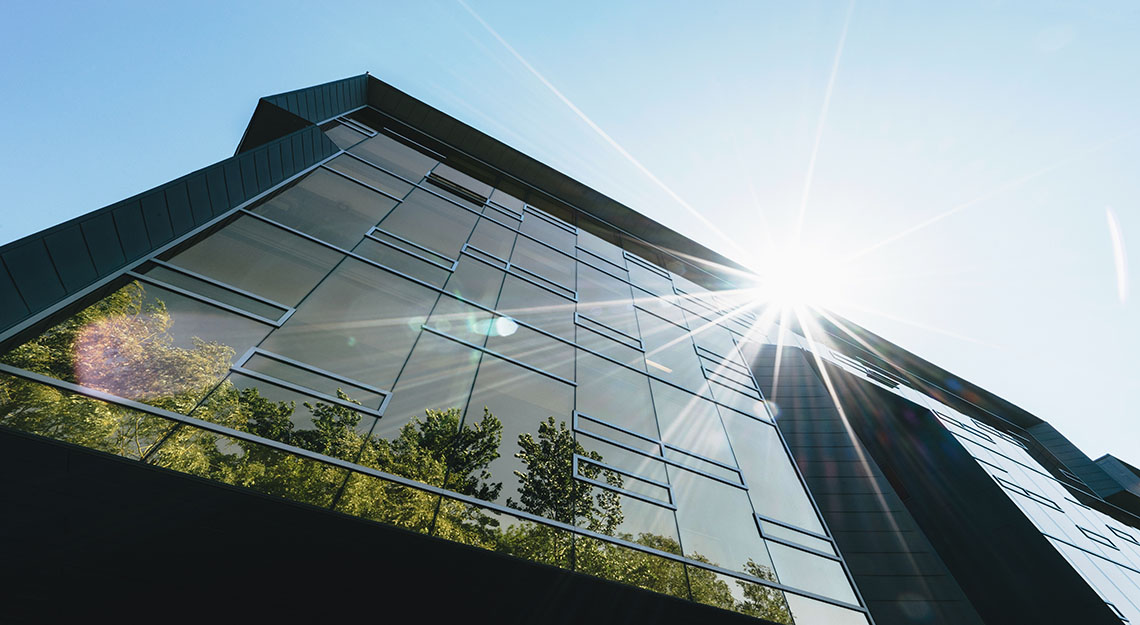Renovations can be costly regardless of whether you’re trying to keep materials, practices, and outcomes sustainable and eco-friendly. But keep in mind that the amount you invest in renovations can come back as returns and savings, both financial and otherwise (think health and quality of life!)
So what are the best ways to keep costs low and returns high when undertaking sustainable renovations to your primary residence? Here are a couple of key tips:
Choose substance over style
It can be temping to go for flash and choose visually pleasing green renovations like recycled glass countertops and reclaimed wood infrastructure, both of which are certainly beautiful and eco-friendly options. But keep in mind that the less aesthetic and more structural renovations are the ones that are really going to last years, even decades, thereby extending the return on your investment.
For example, outfitting your home with energy-efficient windows (fibreglass frames, double-pane insulated glass, retractable screens, etc.) may cost thousands of dollars, but the Canadian Appraisal Institute estimates this renovation could provide a return of 50% to 75% on the initial investment.
Similarly, new roofing may not be an eye-catching show-stopper, but it’s a critical part of your home’s structural integrity and energy efficiency. Over the last few decades, global standard-setters like the International Energy Conservation Code (IECC) have increased recommended levels of insulation to maximize the efficiency of a roof’s thermal barrier. This means that older homes will usually only have 1-2″ of insulation, while a renovation can much more efficiently keep heat in during winter and out during summer, saving you money on heating and cooling costs.
While you’re roofing, consider add-ons like roof drains that capture stormwater runoff—something Green Earth Village plans on harnessing as a method of reducing water use. Runoff can be used for irrigation, indoor plumbing, and even for drinking when properly filtered. Did you know that it’s possible to meet the entire annual flushing needs of a household with only rainwater? Now that’s a roof that pulls its weight!
Think of your home as your renovation partner
Ask yourself how you can reduce the environmental impact of your home’s specific and unique characteristics; work with your home, not against it! For example, what are your home’s and property’s sources of natural light and airflow? How can you work with the layout and orientation of the home to maximize these? You may want to enlist the help of a structural engineer to help you make the most of your home’s one-of-a-kind personality.
For example, Green Earth’s commitment to working with its site’s surrounding landscape includes a consideration of East Gwillimbury’s particular climate, ecosystem, and location, all of which are ideal for the kind of mixed-use sustainable community that’s envisioned here.
Another fun and green-friendly way to make your home your renovation partner is by using existing on-site materials, especially if you’re doing large-scale structural renovations anyway (see above: roofing, windows). For instance, leftover bricks can be great for paving, old flooring can be used to build shelves or fences, and old windows and doors make great décor. Think of your home as a living being whose regeneration and evolution is a constantly-transforming cycle.
Monitor, measure, and maximize!
If you want to reduce energy usage and bills through green renovations, it’s important to know how much you’re using and paying in the first place. Installing modern, accurate, and high-quality measuring devices is key to evaluating the returns you expect on investing in renovations.
For example, putting in a programmable thermostat is one of the simplest and most affordable ways to increase your energy efficiency and to save a few bucks. You won’t know exactly how much those fancy eco-friendly windowpanes are saving you in energy costs if you don’t keep track!
Eco-friendly renovations don’t have to be intimidating or unreasonably expensive when you look at the long-term returns. Think practically, act creatively, keep an eye on the numbers carefully, and you’ll maximize the efficiency of your home in no time at all.



